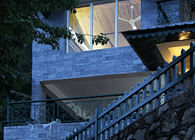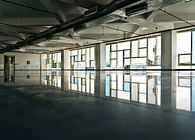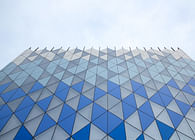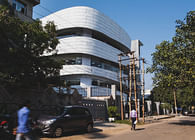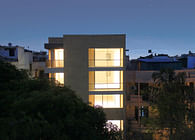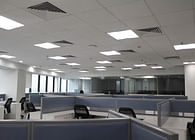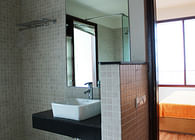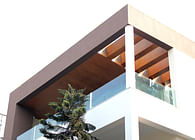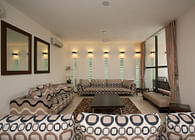
New Delhi, IN
While the location may be classified as suburban, the immediate context of this project is undeniably urban. Situated close to the Yamuna, a substantial river that forms a natural boundary between the capital city of Delhi and Noida, it forms part of planned plotted development conceived as little as three decades ago, yet rapidly transforming into a city in its own right. An elevated rail transit station is at the rear and the surrounding building density rivals indigenous developments, agglomerations that tend to be much higher than what urban planners espouse.
The owners approached us with a divergent brief. The house had to accommodate multiple generations of a growing family that wanted a unified living experience, but needed their individual spaces to reflect their own unique characteristics. This evolving brief created the parti for the building - a series of stacked plans that follow the same footprint, but have dramatically different layouts. Enveloping these is a facade that reflects these disparities - the materials change from one floor to the next, as does the nature of the shaded spaces. A wood screen is used to stitch the elements together. These varying elements are dominated by the use of the colour black - whether in the choice of the slate cladding, the colour of the window frames or the painted surfaces. This dark tone gives the house its name, appropriated from the french word for black.
The building sits on a narrow street and the response is the make the entrance and parking feel like an extension of the ground plane. An automated garage shutter occupies most of the width of the property, a nod to the family’s love of cars. Inside, a pristine space is designed almost as a shrine to the automobile, with dark floors offset by white walls and ceilings, crisscrossed with strip lighting. From the street, a small gate leads to an intimate courtyard that seems to merge into the interior double height space, separated by “barely-there” glazing. This double height space discreetly recesses the elevator volume behind a staircase that takes one to the main living space.
The main living floor, suspended over the parking, is designed as a pavilion with glazing at either end. Not only does this enable cross ventilation, it also visually expands the space, belying the actual dimensions of the space. Upper floors recede from public to private, from the old to the young, housing multiple bedrooms with markedly varying characteristics. The terrace is intended to be used to entertain and rejuvenate, letting the eye travel over the urban landscape.
The building is designed to be inherently sustainable - not only is it planned for minimal heat gain, it is also designed to breathe and allow natural ventilation. Double glazed aluminium windows, LED lighting, Rainwater harvesting, Maintenance free locally sourced finishing materials and FSC certified exterior grade wood for the screens and railing tops are now minimum standard across all our buildings.
Status: Built
Location: New Delhi, IN
Firm Role: Architect


